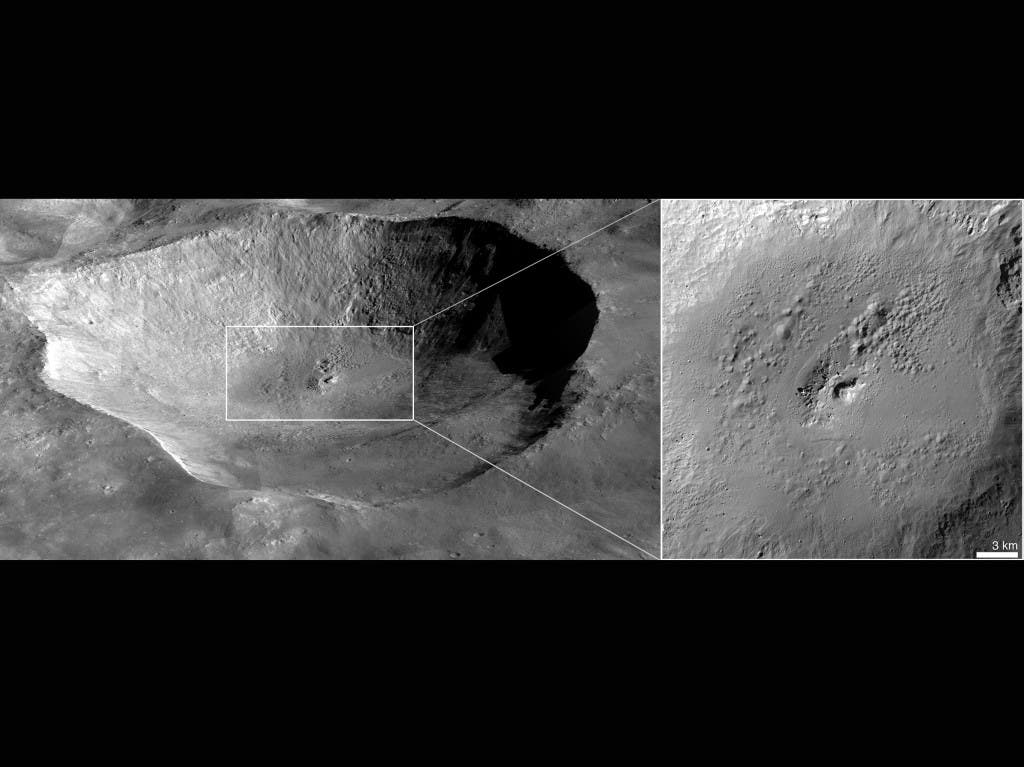Two studies conducted by scientists at NASA based on data gathered by the Dawn spacecraft, which orbited around the Vesta asteroid, showed that the giant space rock holds tantalizing signs of water on its surface – albeit in very small amounts, in the form of hydrated minerals.

These conclusions were drawn after scientists found that volatile, or easily evaporated materials, have colored Vesta’s surface in a broad swath around its equator. Again, concerning its geometry, peculiar pothole-like features mark some of the asteroid’s surface where the volatiles, likely water, released from hydrated minerals boiled off and eroded the rock. These formations have been found to be extremely similar to those on Mars, however while the planet is known to have been abundant in water at a time; these feature identified on Vesta, an asteroid, took scientists particularly by surprise.
Again, no actual water was found, but scientists explain that due to the high energy release during collisions with other space rocks, the hydrogen bound to the minerals was converted into water, which instantly evaporated and thus geologically shaped the asteroid. The holes that were left as the water escaped stretch as much as 0.6 miles (1 kilometer) across and go down as deep as 700 feet (200 meters).
“The source of the hydrogen within Vesta’s surface appears to be hydrated minerals delivered by carbon-rich space rocks that collided with Vesta at speeds slow enough to preserve their volatile content,” said Thomas Prettyman, the lead scientist for Dawn’s gamma ray and neutron detector (GRaND) at the Planetary Science Institute in Tucson, Ariz.
At first, the researchers hypothesized that it might be possible for ice water to survive on the surface of the asteroid, at its poles. However, Vesta has no permanently shadowed polar regions where ice might survive, and is permanently exposed to sunlight in a cyclic fashion.
These results provide evidence that not only were hydrated materials present, but they played an important role in shaping the asteroid’s geology and the surface we see today.
The Dawn spacecraft left last month from Vesta’s orbit, which is the 2nd largest rock in the asteroid belt, and is currently heading for the dwarf planet of Ceres – the biggest rock in the asteroid belt.
The findings were described in two papers published in the journal Science.


